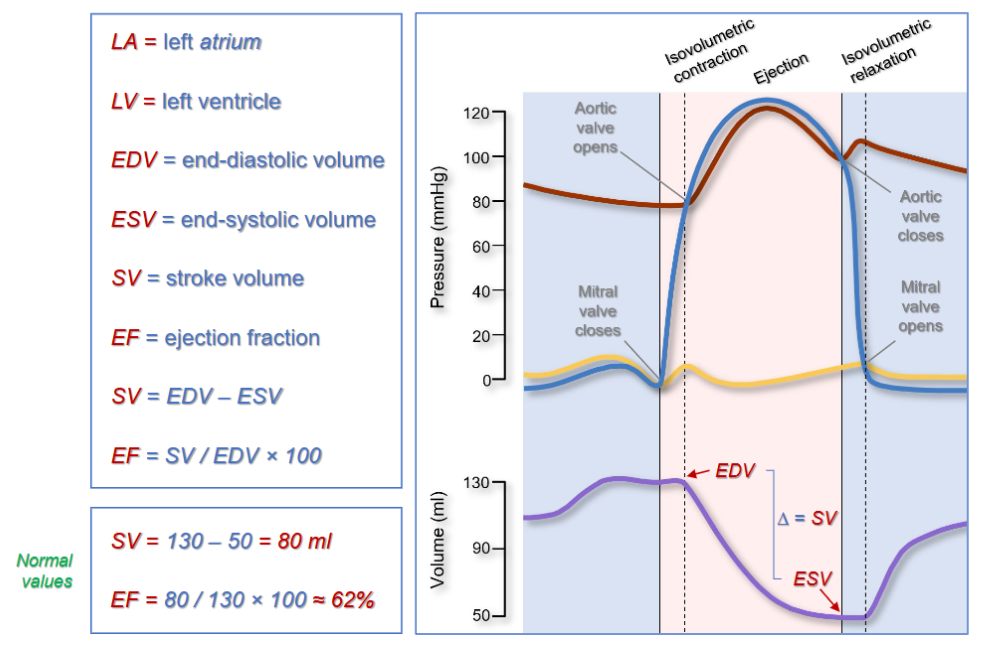Ventricular Pressures and Volumes
1/8
There's no tags or description
Looks like no tags are added yet.
Name | Mastery | Learn | Test | Matching | Spaced |
|---|
No study sessions yet.
9 Terms
Cardiac anatomy recap: coronal section diagram
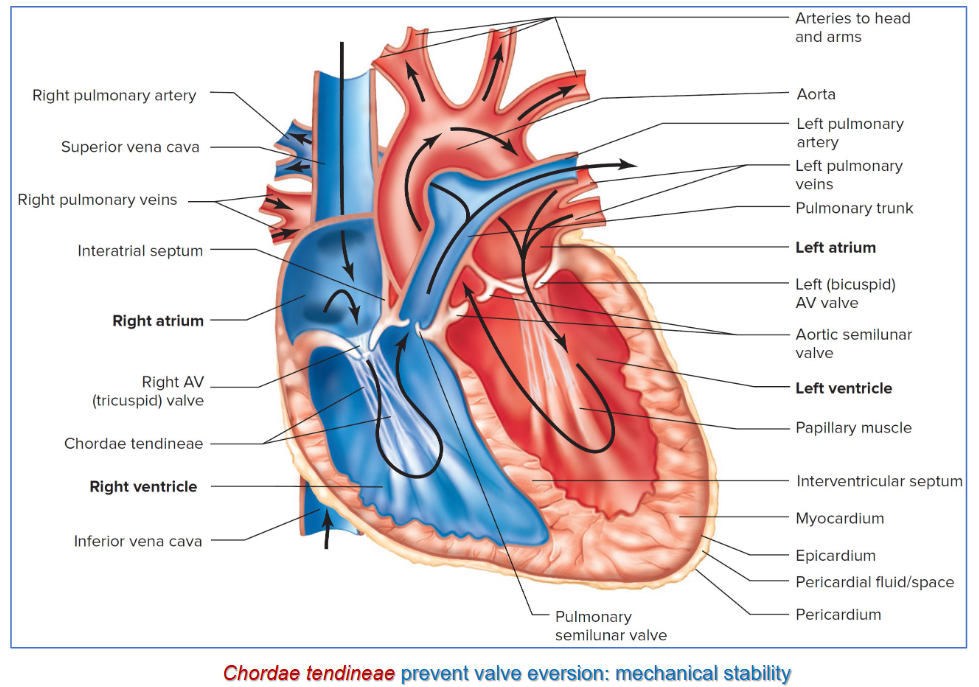
Anatomy recap: cardiac valves
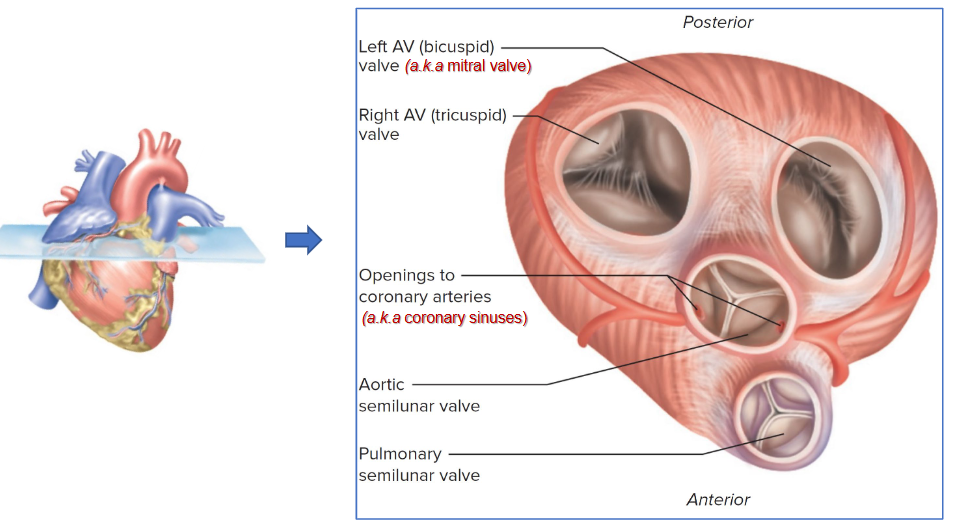
Basic principles of the cardiac cycle
Any mechanical activity (contraction of atrial and/or ventricular muscle) is preceded and thus triggered by electrical activity generated within the cardiac pacemakers, that then flows through cardiac excito-conductor system ‘the wiring’.)
Blood flows in favor of the pressure gradient e.g. from regions of high to low pressure
Systole (atrial or ventricular contraction) increases pressure
Atrioventricular valves open when atrial > ventricular pressure and close when gradient is reversed.
Semilunar valves (aortic & pulmonary) open when ventricular > aortic/pulmonary pressures; similarly, they close when
All valves are unidirectional (prevent backflow from the arteries and ventricles towards the atria and veins).
Origins of electrical activity
Normal pacemaker is the sinoatrial (SA) node
The atrioventricular (AV) node is the secondary pacemaker
Pacemakers set the rhythm of cardiac contraction
Automatic: spontaneously generate rhythmic action potentials (autorhythmic cells)
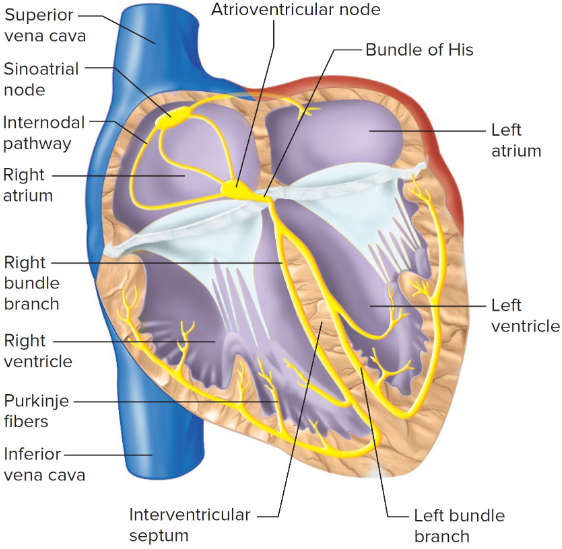
The cardiac cycle
Sequence of contractile events triggered in a coordinated manner by the cardiac conduction system, as they relate to the changes in volumes, pressures and valves opening/closing in the heart and major vessels.
Broadly divided according to the stata of ventricles (contracting = stystole or relaxing = diastole)
At heart rate of 75 mins^-1 (bpm) with a beat-to-beat interval (RR = 800 ms or 0.8s), systole lasts for = 1/3 of the cycle (267 ms or = 0.3s) whereas diastole occupies the remaining 2/3 (533 ms or = 0.5s)
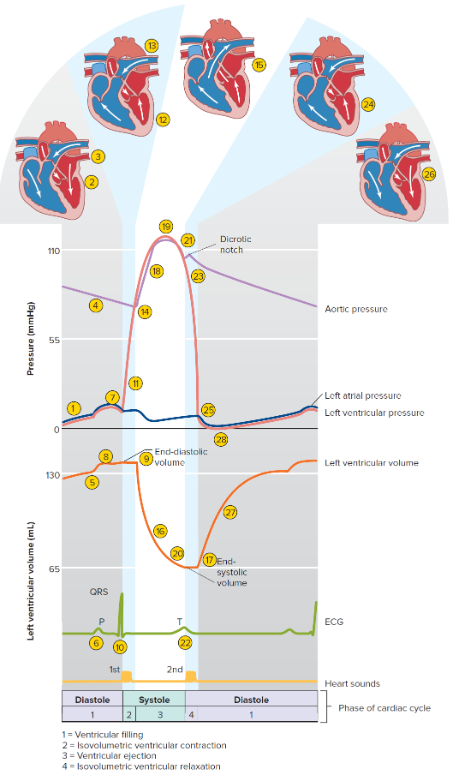
Cardiac output: ventricular output per minute
Blood volume pumped by each ventricle in one minute (LV = RV)
Volemia in an average 70kg adult is =7% of body weight =5 liters
Stroke volume (SV): 70 - 80ml per heartbeat
Heart rate (HR): 75 min^-1 (average)

Cardiac systole: two phases
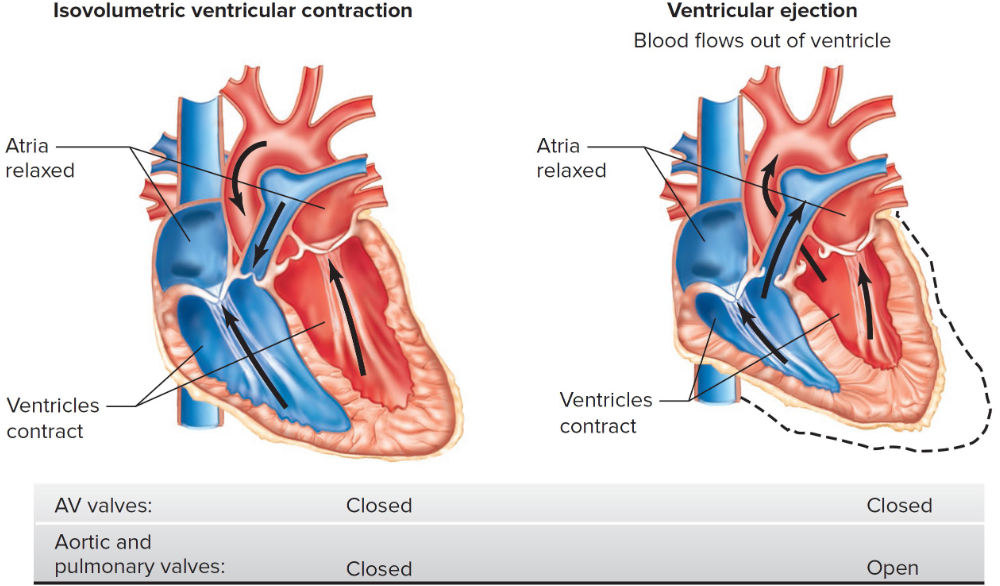
Cardiac diastole: three phases
During cardiac systole, which is the contraction phase of the heart's cardiac cycle:
Atrial Contraction: The atria contract first, pushing blood into the ventricles.
Ventricular Contraction: The ventricles contract next, increasing pressure within them.
Closure of Atrioventricular Valves: As ventricular pressure rises, the atrioventricular valves (tricuspid and mitral valves) close to prevent blood from flowing back into the atria.
Opening of Semilunar Valves: Once ventricular pressure exceeds the pressure in the arteries (aorta and pulmonary artery), the semilunar valves (aortic and pulmonary valves) open, allowing blood to be ejected into the pulmonary circulation (from the right ventricle) or systemic circulation (from the left ventricle).
This process ensures efficient pumping of blood from the heart into the circulation, providing oxygen and nutrients to the body's tissues.
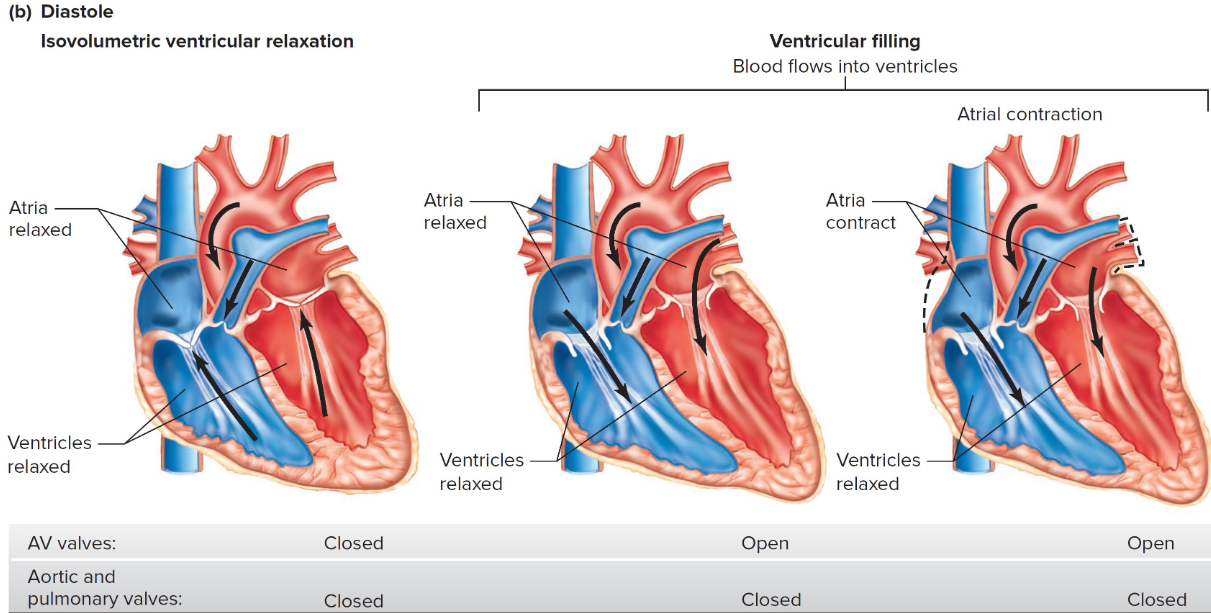
Volume and pressure: stroke volume (sv)
LV pressure: 9 - 120 mmHg . Aortic pressure: 80 - 120 mmHg
Ejection occurs when LV pressure > Aortic pressure
Stroke volume: volume of blood ejected by the LV onto the Aorta (systole)
